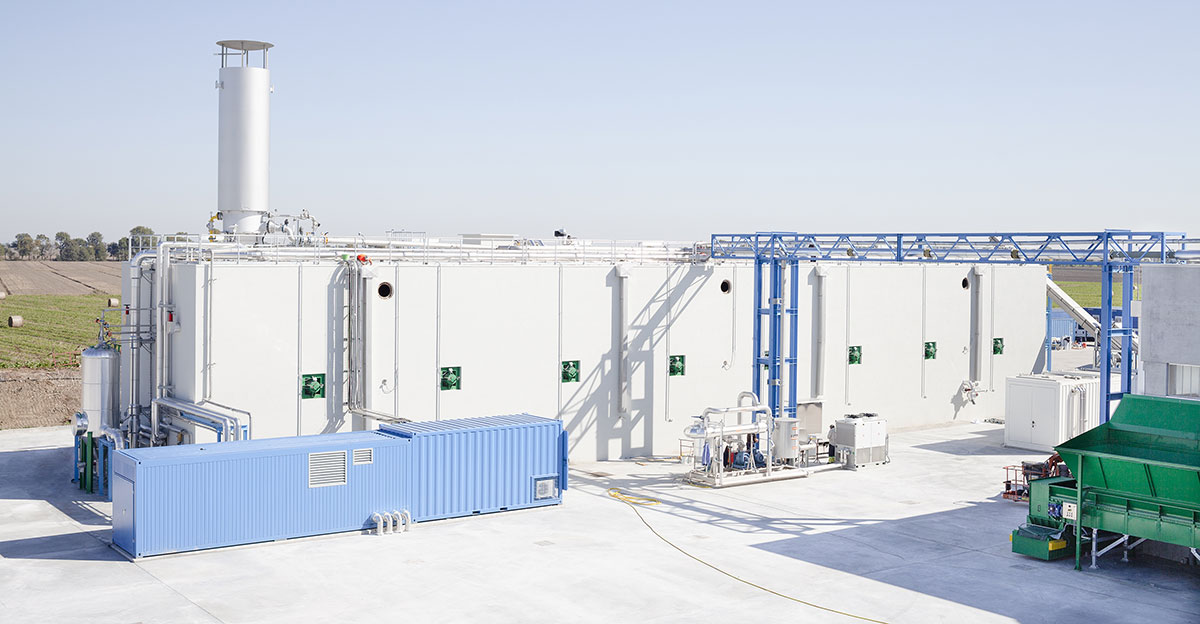AIMAG has implemented a door-to-door waste collection system. This system is also applied to organic waste and, in general, it shows an increasing quality of collected waste.
After collection, the organic fraction is transported to one of the two composting plants managed by AIMAG which have a total capacity of 110.000 tons/year and where 30.000 tons of compost are produced every year.
In Massa Finalese, the composting plant was integrated with a semi-dry anaerobic digestion section and an upgrading section for the refining of the biogas and the production of biomethane, which is then sent to the distribution network.
The anaerobic digestion section is fed with urban organic waste.
SOME NUMBERS
- 50.000 tons/year of treated organic waste
- 3.080.000 mc of produced biomethane
- 17.000 tons/year of compost produced for organic agriculture

